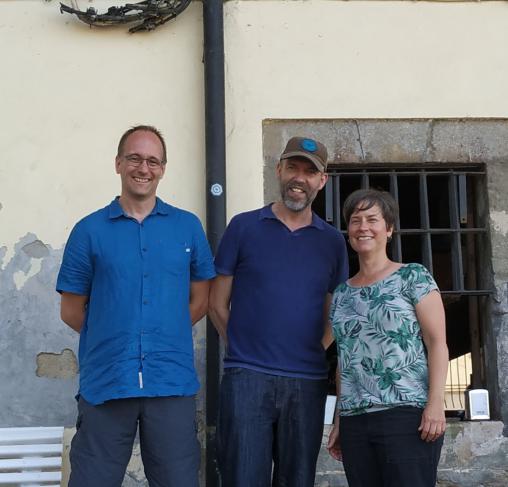Hinrich Sachs nominated by Iratxe Jaio and Klaas van Gorkum as their successor for Museo Bikoitza
The strict division between the categories of fine art and ethnography in museums of cultural heritage is a contentious topic. Any attempt to redress the balance between the two tends to meet with resistance, as soon as it challenges the core values and conventions from which museums derive their authority.
With Museo Bikoitza, however, the San Telmo Museum in Donostia / San Sebastian has generously opened up a pioneering space of experimentation between these categories, and granted a prominent role to artistic practices in the development of innovative approaches to its own ethnographic collection and narratives of display.
To do justice to the scope of this undertaking requires a certain cultural sensibility, and a capacity to look beyond the horizon of one’s own discipline. That is why, after careful deliberation, we are pleased to nominate Hinrich Sachs as our successor in the Museo Bikoitza project.
Hinrich Sachs is a Swiss artist who was raised in Donostia, but currently lives and works in Basel. As a child of two cultures, he has developed an innate awareness of the subtle forces that shape our sense of belonging. In his words: “I believe that objects, and materials too, are influencing behavioral patterns, convictions as well as perceptions much more than we want to believe according to the ideals of the self-contained individual: the modern subject who wishes to happily identify the world through concepts, ideas and beliefs.”
The ethnographic methodology in his artistic practice serves to expose the hidden strategies behind the things we might ordinarily take for granted, such as the typography of signs in public space, or the images used in educational materials for children. Sachs pays particular attention to the effects of globalization and late capitalism on specific local cultural idiosyncrasies, and is the author of the already classic “International Auction of Basque Typefaces”, realized in collaboration with consonni in 2001.
The archive of this particular work was included into the collections of the Reina Sofia Museum in Madrid, which is an important step towards acknowledging the cultural value of such intangible and performative projects. But the artist is not yet adequately represented in the fine art collections of the Basque territory itself. An omission we hope to remedy by inviting Hinrich Sachs to work closely with San Telmo, the Museum for Basque Society and Citizenship.
* Museo Bikoitza, or the Double Museum, is a programme of annual interventions in the museum by a guest artist. The aim is to provide a favourable environment for a series of re-readings of the collection and museographical story by different artists. The result of this work will form part of the exhibition programme for a year, before finally being added to the museum’s art collection.







